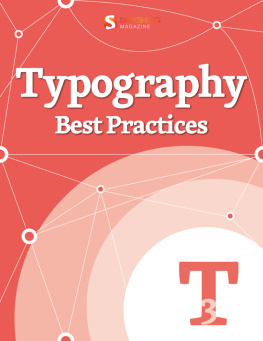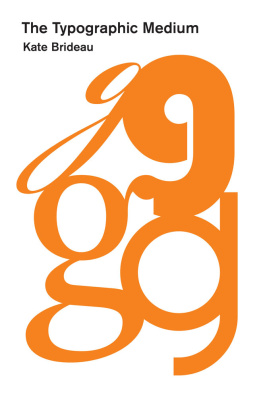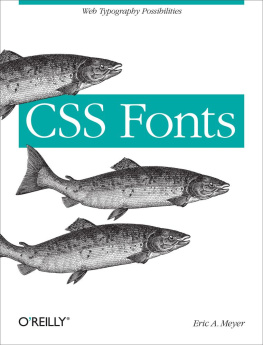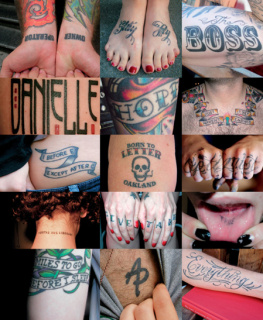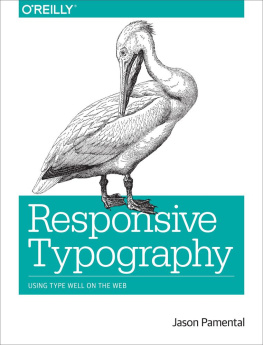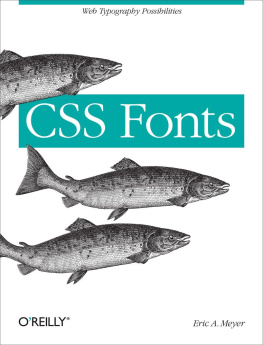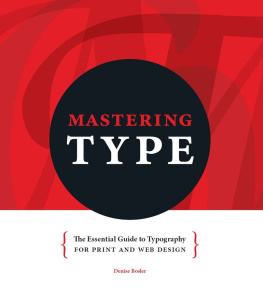Web design is not just about a flamboyant or simply beautiful website appearance. This book is about small but crucial details, in a specialty that is all about details. Whether you're interested in determining the right paragraph layout or typographic details, observing the correct typographic etiquette or making the other small decisions that will dramatically influence how your website is perceived, many answers will present themselves in this collection of articles.
About The Authors
Carolyn Knight & Jessica Glaser
Carolyn Knight and Jessica Glaser are academics from the University of Wolverhampton in the UK, graphic designers, and prolific design writers. Their numerous books focus on topics including the use of space in graphic design, mnemonics and memory devices and the understanding and creation of visual hierarchy. Their latest book is the best selling Graphic Design Exercise Book, published in English by RotoVision and in Spanish by Editorial Gustavo Gili. Their company Bright Pink Communication Design, works in such areas as healthcare, construction, education, financial services and the public sector.
Heydon Pickering
Heydon is a Web designer from Norwich in the UK. He blogs about beautiful code and ugly music at
David Kadavy
David Kadavy is the author of .
Laura Franz
Laura Franz is a Professor at UMass Dartmouth, where she teaches a wide range of type classesincluding a Web Typography class in The Graduate Certificate In Web and Interaction Design. Inspired by the intersection of tradition and technology, Laura shares her Web font recommendations on .
Dan Reynolds
Dan Reynolds is a Berlin-based type designer. After studies in Germany, the UK and the US, he now works as a doctoral candidate and research assistant at the Braunschweig University of Art. You can .
Nathan Ford
Nathan Ford is a Texas-born designer/developer happily working at
About Smashing Magazine
.
Smashing Magazine publishes articles on a daily basis with topics ranging from business, visual design, typography, front-end as well as back-end development, all the way to usability and user experience design. The magazine isand always has beena professional and independent online publication neither controlled nor influenced by any third parties, delivering content in the best interest of its readers. These guidelines are continually revised and updated to assure that the quality of the published content is never compromised.
About Smashing Media GmbH
is one of the world's leading online publishing companies in the field of Web design. Founded in 2009 by Sven Lennartz and Vitaly Friedman, the company's headquarters is situated in southern Germany, in the sunny city of Freiburg im Breisgau. Smashing Media's lead publication, Smashing Magazine, has gained worldwide attention since its emergence back in 2006, and is supported by the vast, global Smashing community and readership. Smashing Magazine had proven to be a trustworthy online source containing high quality articles on progressive design and coding techniques as well as recent developments in the Web design industry.
http://www.heydonworks.com/
http://www.crabsareodd.com/
http://www.twitter.com/@heydonworks
http://www.amazon.com/Design-Hackers-Reverse-Engineering-Beauty/dp/1119998956
http://digioh.com/v/k/10033
http://www.kadavy.net
http://www.twitter.com/kadavy
http://www.goodwebfonts.com/
http://www.lynda.com/Web-Fonts-tutorials/Typography-for-Web-Designers/79411-2.html
http://www.lynda.com/course-tutorials/Choosing-Using-Web-Fonts/97715-2.html
http://www.typeoff.de/
http://www.twitter.com/typeoff
http://markboultondesign.com/
http://fount.artequalswork.com/
http://min.artequalswork.com/
http://unify.unitinteractive.com/
http://artequalswork.com/
http://www.twitter.com/nathan_ford
http://www.smashingmagazine.com
http://www.smashingmagazine.com/publishing-policy/
http://www.smashing-media.com
The Perfect Paragraph
By Heydon Pickering
In this chapter, I'd like to reacquaint you with the humble workhorse of communication that is the paragraph. Paragraphs are everywhere. In fact, at the high risk of stating the obvious, you are reading one now. Despite their ubiquity, we frequently neglect their presentation. This is a mistake. Here, we'll refer to some time-honored typesetting conventions, with an emphasis on readability, and offer guidance on adapting them effectively for devices and screens. We'll see that the ability to embed fonts with @font-face is not by itself a solution to all of our typographic challenges.
A Web Of Words
In 1992, Tim Berners-Lee circulated a document titled on the proposed image tag.
Bursting with imagery, motion, interaction and distraction though it is, today's World Wide Web is still primarily a conduit for textual information. In HTML5, the focus on writing and authorship is more pronounced than ever. It's evident in the very way that new elements such as article and aside are named. HTML5 asks us to treat the HTML document more as well, a document.
It's not just the specifications that are changing, either. Much has been made of like, Was the article edited well, or does it appear sloppy or hastily produced? and Does this article provide a complete or comprehensive description of the topic?, the sorts of questions one might expect to be posed by an earnest college professor.
This increased support for quality writing, allied with the book-like convenience and tactility of smartphones and tablets, means there has never been a better time for reading online. The remaining task is to make the writing itself a joy to read.
What Is The Perfect Paragraph?
As designers, we are frequently and incorrectly reminded that our job is to make things pretty. We are indeed designersnot artistsand there is no place for for which the Web page was conceived. The medium is not the message.
Never is this principle more pertinent than when dealing with type, the bread and butter of Web-borne communication. A well-set paragraph of text is not supposed to wow the reader; the wowing should be left to the idea or observation for which the paragraph is a vehicle. In fact, the perfect paragraph is unassuming to the point of near . That is not to say that the appearance of your text should have no appeal at all. On the contrary: well-balanced, comfortably read typography is a thing of beauty; it's just not the arresting sort of beauty that might distract you from reading.

